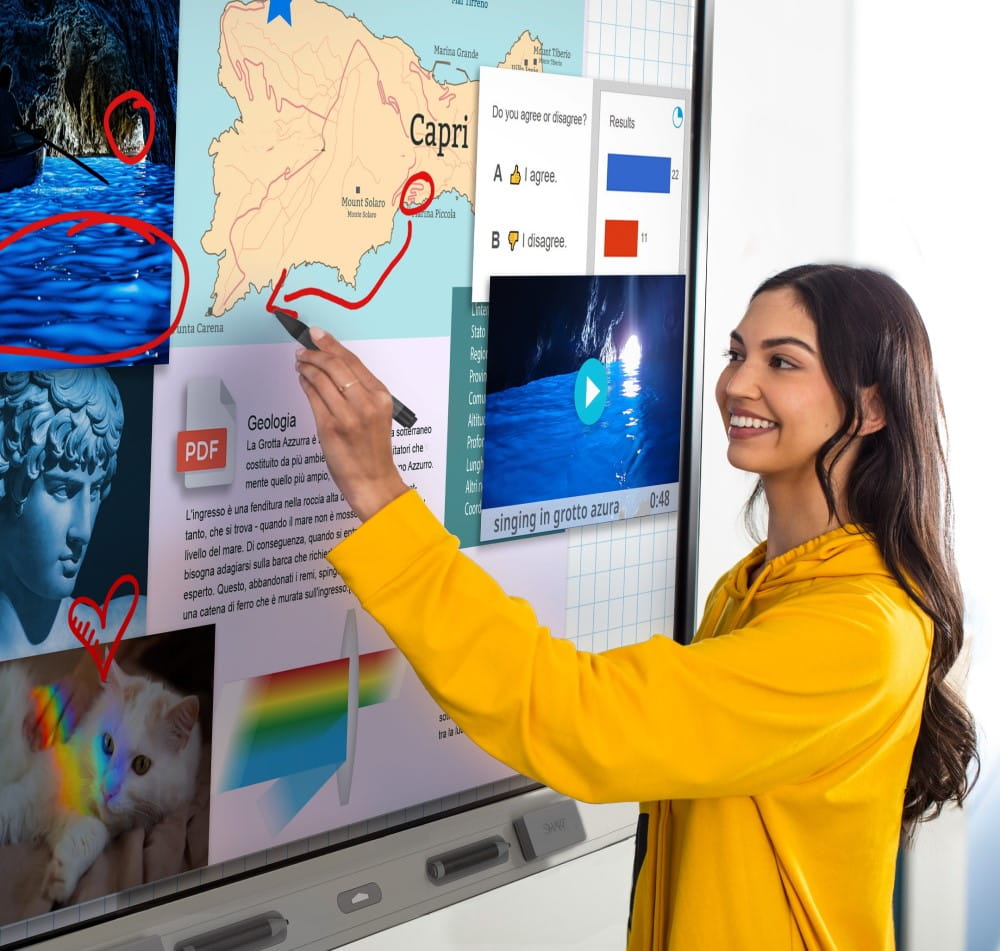The world of education is undergoing a technological renaissance, and at the forefront of this transformation are interactive boards. Gone are the days when teaching relied solely on chalkboards or even traditional whiteboards. Today, tools like the interactive whiteboard are reshaping classrooms, empowering educators, and engaging students in ways never thought possible.
This shift isn’t just about embracing innovation for the sake of it. It’s about making teaching smarter, simpler, and more effective. Interactive boards offer a dynamic blend of technology and traditional teaching methods, creating an environment where learning is exciting and impactful. Let’s explore how these boards are redefining education for the modern era.
What Are Interactive Boards?
An interactive board, often referred to as an interactive whiteboard, is a versatile teaching tool that combines a large touch-sensitive screen with the power of a computer and projector. This technology transforms a simple display surface into an interactive hub for teaching and learning.
Imagine a board that allows you to:
- Display multimedia content like videos and animations.
- Write, draw, and annotate using a stylus or your fingers.
- Integrate live polls, quizzes, and interactive games.
- Save and share notes and presentations seamlessly.
These capabilities make the interactive board far more than just a teaching aid—it becomes a central element of the learning experience.
Simplifying Teaching for Educators
One of the biggest challenges teachers face is managing time and resources while delivering engaging lessons. Interactive boards address this challenge by streamlining lesson planning and execution. Here’s how:
1. Effortless Integration of Resources
Interactive boards allow teachers to integrate a wide range of resources into their lessons, including:
- Online articles and videos.
- Interactive diagrams and charts.
- Educational apps and games.
Instead of juggling multiple tools, educators can present everything in one place, saving time and enhancing the flow of the lesson.
2. Customizable Lessons
Every classroom is different, and so are its students. With an interactive whiteboard, teachers can adapt their lessons on the fly, tailoring content to the needs of their students. They can:
- Modify slides and notes during the lesson.
- Highlight key points with annotations.
- Adjust the pace based on student feedback.
This flexibility makes teaching more responsive and effective.
3. Efficient Assessments
Assessments become a breeze with interactive boards. Teachers can create and administer quizzes directly on the board, with results available instantly. This not only saves time but also provides immediate insights into student comprehension.
Engaging Students Like Never Before
In an era where distractions are abundant, keeping students engaged is no small feat. Traditional teaching methods often struggle to compete with the allure of digital devices. This is where interactive boards shine.
1. Interactive Learning Experiences
Imagine a geography class where students can:
- Zoom into 3D maps to explore different terrains.
- Watch a video about volcanic eruptions and discuss the science behind it.
- Take part in a group activity to label continents directly on the board.
By making lessons interactive, these boards turn passive learners into active participants.
2. Encouraging Collaboration
Interactive boards foster a sense of teamwork by encouraging students to:
- Work together on projects displayed on the board.
- Share their ideas and solutions with the class.
- Engage in group discussions using visual aids.
This collaborative approach not only enhances understanding but also builds essential skills like communication and teamwork.
3. Appealing to Different Learning Styles
Every student learns differently. Interactive boards accommodate this diversity by offering:
- Visual aids for visual learners.
- Audio features for auditory learners.
- Touch-based interactions for kinesthetic learners.
This inclusivity ensures that every student has the opportunity to thrive.
Making Learning Smarter
Interactive boards do more than just simplify teaching; they make learning smarter by leveraging the power of technology to deliver content in innovative ways. Here’s how:
1. Access to Real-Time Information
Teachers can use interactive boards to access up-to-date information, ensuring that lessons remain relevant and accurate. For example:
- A history teacher can pull up current events to draw parallels with past events.
- A science teacher can showcase the latest discoveries and breakthroughs.
2. Integration of Artificial Intelligence
Many interactive boards now feature AI-driven tools that:
- Provide instant translations for language classes.
- Offer real-time feedback on student handwriting and drawing.
- Suggest resources based on lesson content.
These tools make learning more efficient and personalized.
Overcoming Challenges
While the benefits of interactive boards are clear, their implementation does come with challenges. Schools may face concerns about cost, training, and maintenance. However, these obstacles can be addressed:
- Cost: While the initial investment is significant, the long-term savings on teaching materials and improved learning outcomes justify the expense.
- Training: Most interactive boards are designed to be user-friendly, and manufacturers often provide training resources to help teachers get started.
- Maintenance: Regular updates and basic care keep the boards running smoothly for years.
Why Every Classroom Needs an Interactive Board
The integration of interactive boards into classrooms isn’t just a trend; it’s a necessity for preparing students for the future. These tools equip students with:
- Digital literacy skills essential for the modern workplace.
- Critical thinking and problem-solving abilities.
- A collaborative mindset that values teamwork and innovation.
For teachers, interactive boards represent a way to enhance their craft, making lessons more impactful and rewarding.
The Emotional Impact of Interactive Boards
Beyond their practical benefits, interactive boards bring a sense of excitement and curiosity to the classroom. They transform mundane lessons into captivating journeys of discovery, sparking a love for learning that lasts a lifetime. Teachers rediscover their passion for education as they explore creative ways to engage their students.
The Future of Education
As technology continues to evolve, the role of interactive boards in education will only grow. They represent the perfect blend of tradition and innovation, bridging the gap between how we’ve always taught and how we’ll teach in the future. By adopting interactive boards, schools can create classrooms that are not only smarter but also more inclusive, dynamic, and effective.
The question is no longer whether interactive boards are worth the investment but rather how quickly schools can integrate them to unlock their full potential. With an interactive whiteboard at the center of the classroom, the future of education looks brighter than ever.

